10 Tips for Running a Killer Offsite
For anyone in charge of organizing a leadership offsite program, great challenges await. For many companies, there are more complaints than compliments for these types of workshops. Instead of being fun and useful, they are too often boring and irrelevant. How can you stop that from being the case?
For starters, there are three main criteria to keep in mind. Offsite programs should have a real-world impact, provide a change in perspective, and create renewed energy for everyone in attendance. To help you reach those three key objectives, we have devised a list of 10 tips that can help you run a killer offsite workshop that will have a positive impact on your business moving forward.
Tip 1: Set Top Down Stretch Goals Upfront

No offsite program should begin without company leaders stating long-term goals for the company, either for the year or for the following quarter. This helps to set the stage for what will be discussed during the workshop. Just make sure those goals relate to the overall vision of the company. Also, don’t be afraid to be ambitious with your stretch goals or assume that anything is impossible.
Tip 2: Gather Input Upfront

This is another task that should be done ahead of time. Before an offsite event, get feedback from both employees and customers on the state of the business. Learn how others view the state of the business. Just make sure you don’t overreact to that feedback or get too defensive. Instead, use the offset to address the feedback received and make improvements when necessary.
Tip 3: Pick an End Goal for the Offsite
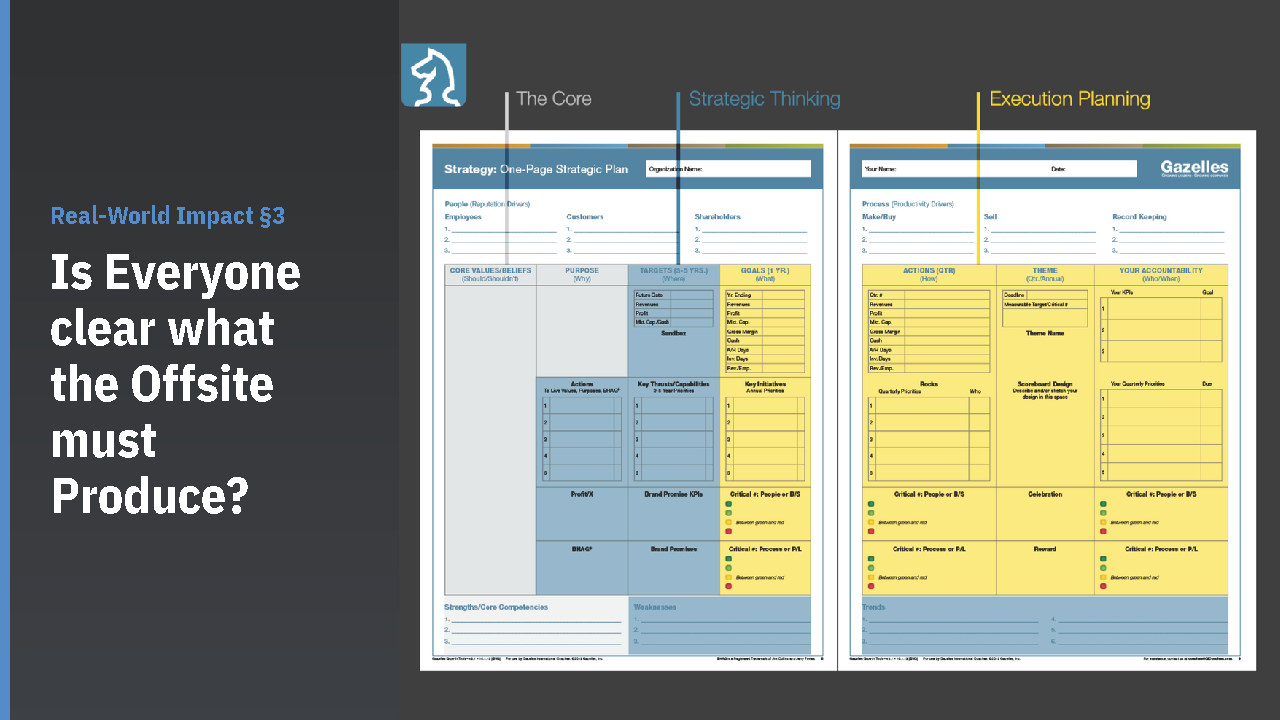
There should always be a clear objective for what the business wants to achieve by the end of the offsite. This way, everyone in attendance will know what the offsite will produce in the end. Likewise, pick a methodology or tool that will help you get to that goal by the end of the offsite workshop.
Tip 4: Line Up Everything to Hit the Ground
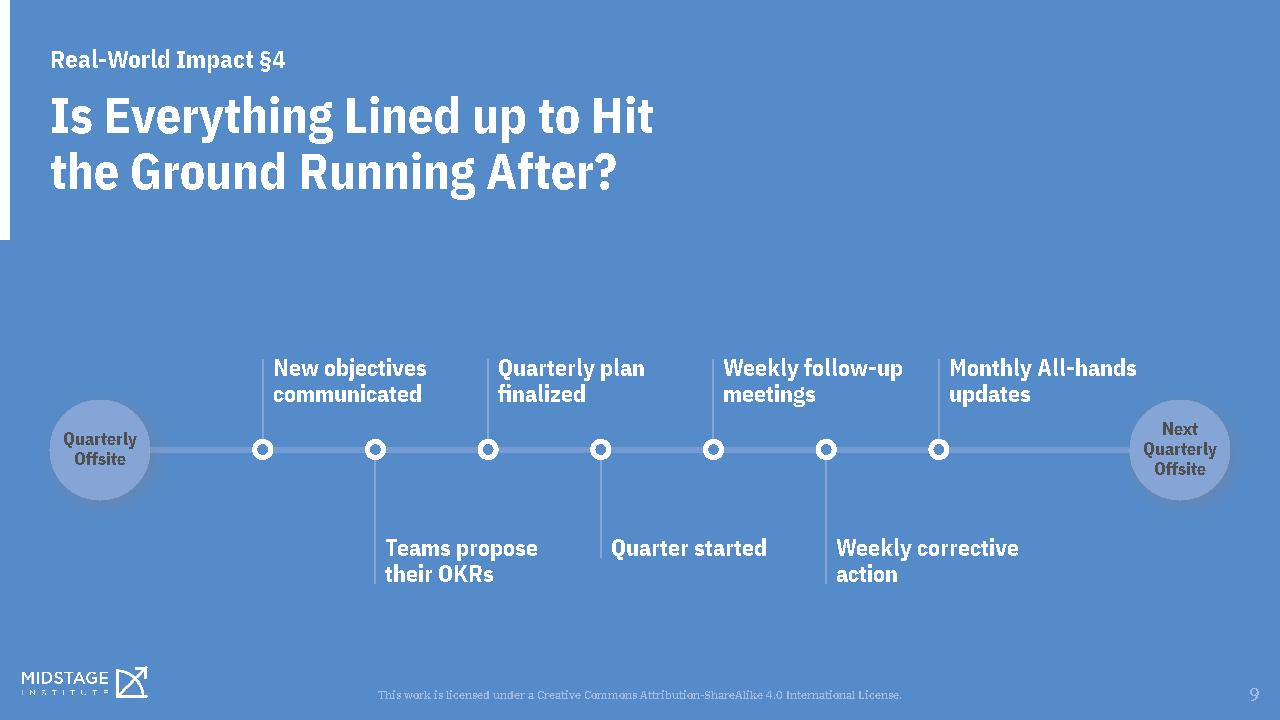
It’s far too common for everything accomplished at an offsite to disappear afterward. Don’t assume that the offsite alone will have an impact on the business. Rather, create a post-workshop plan to implement afterward so that you can follow through on everything that happened during the workshop. Ideally, the leadership team will announce the post-offsite goals and how they will be accomplished.
Tip 5: Make the Workshop for Everyone

Offsite workshops aren’t just for the CEO or other company leaders. Everyone there needs to feel as if the program was designed with them in mind. To do this, take suggestions on what should be on the agenda and include topics people have asked for. Needless to say, the agenda shouldn’t be put together at the last minute. It needs to be carefully put together with topics that will help produce a positive outcome at the end of the workshop.
Tip 6: Breakout Sub Teams
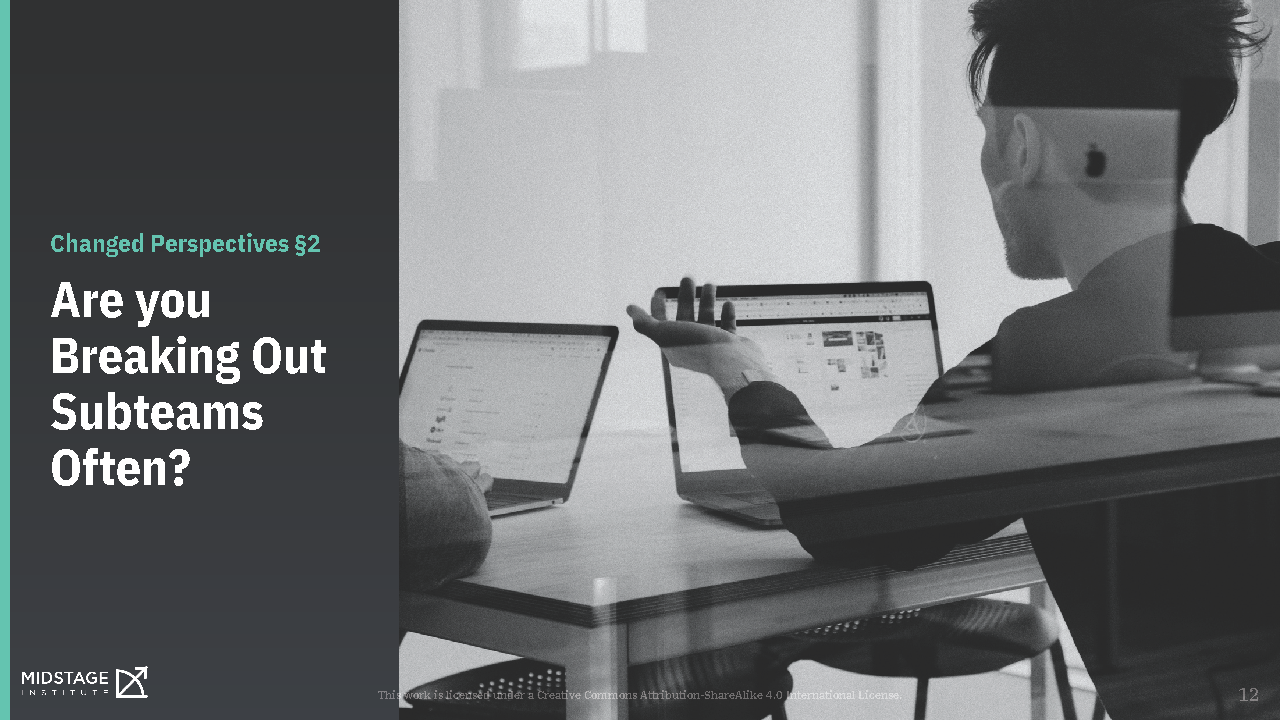
Creating a variety of sub-teams during a workshop is key to helping people work with a variety of other people. You don’t want to limit employees to working with people in their own department. It’s good to frequently mix and match people in different breakout groups and avoid spending more than 20 minutes in the same group. Another good practice is for groups to write down their thoughts, which creates a tangible output for group activities.
Tip 7: Use a Professional to Facilitate
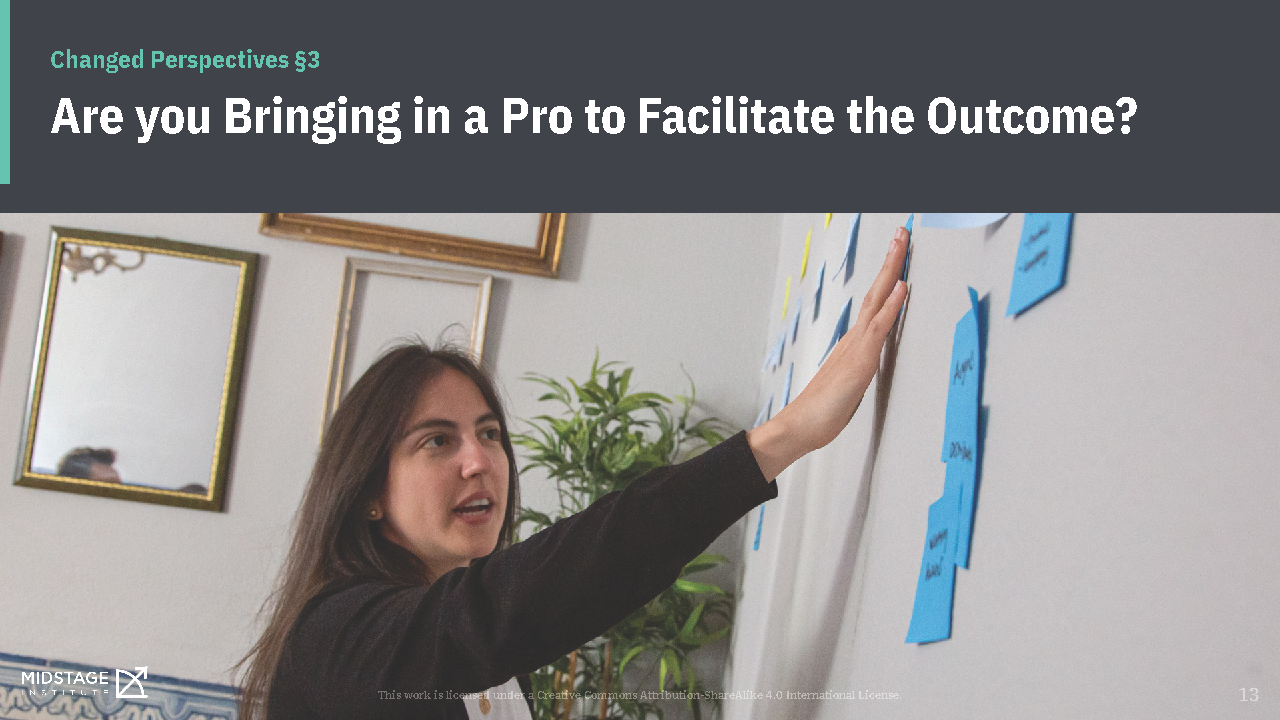
An external facilitator is typically helpful for offsite workshops. Someone from outside the company can bring a new perspective and help everyone look at things differently. Also, without an outside professional leading the offsite program, company leaders don’t have to worry about leading the program. Instead, they can spend their time participating and observing the team.
Tip 8: Prep Beforehand

As mentioned, there are several tasks to accomplish before any offsite workshop. Much of the work will be done well in advance of the event. This can include conducting interviews or surveys for everyone before the event and providing pre-event reading materials that are relevant to everyone. Doing this will help ensure that everyone is on the same page heading into the event, which is something you shouldn’t assume.
Tip 9: Provide Variety and Surprises

The last thing any company wants is for employees to be bored during an offsite program. This makes it harder to accomplish what you set out to do. The key is to make sure people don’t have a chance to become passive. They need to be active in learning and producing things rather than spending long periods being a passive audience. It’s also important to balance intense sessions with activities that are meant to be fun and will keep participants engaged.
Tip 10: End with a Sense of Accomplishment
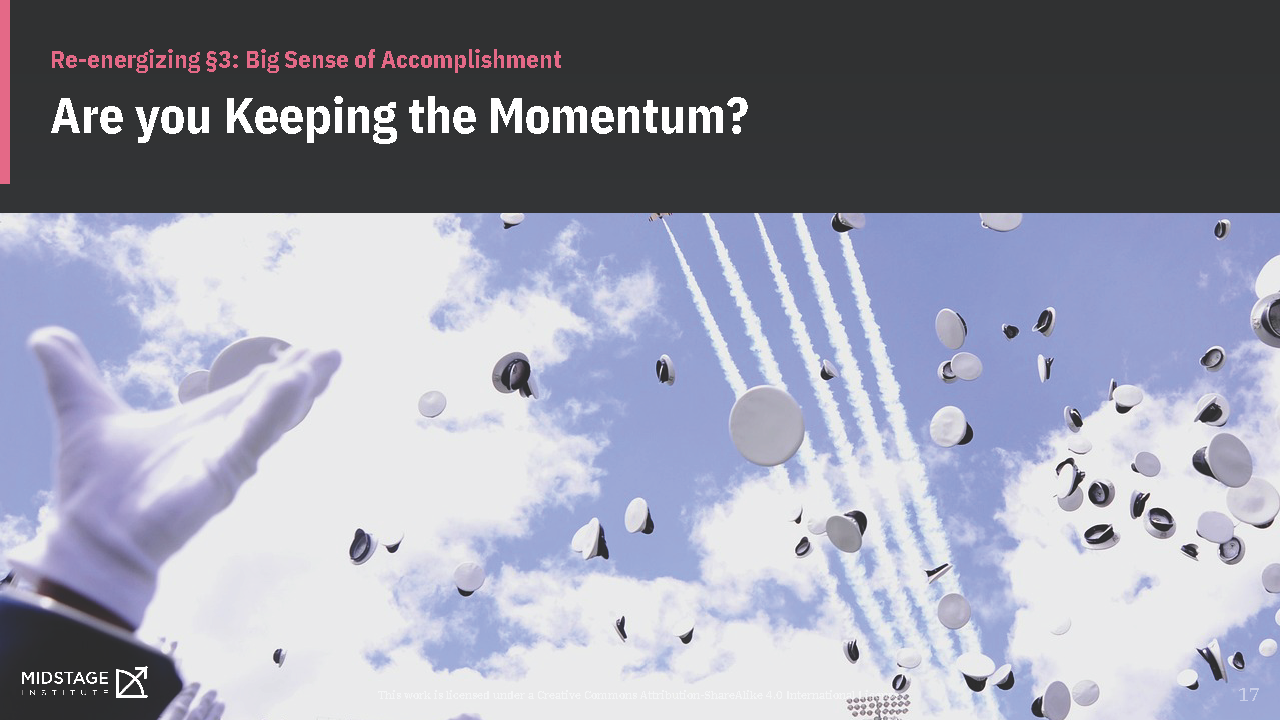
One of the biggest keys for a killer offsite is to end things on a positive note by making it clear that something was accomplished. This means tracking progress throughout the workshop to show people that things are being accomplished. Let people know that the effort they’ve put into the event has paid off.
If you want to learn more about running a killer offsite or want a professional to facilitate your next offsite workshop, reach out to the Midstage Institute.
Roland Siebelink talks all things tech startup and bring you interviews with tech cofounders across the world.